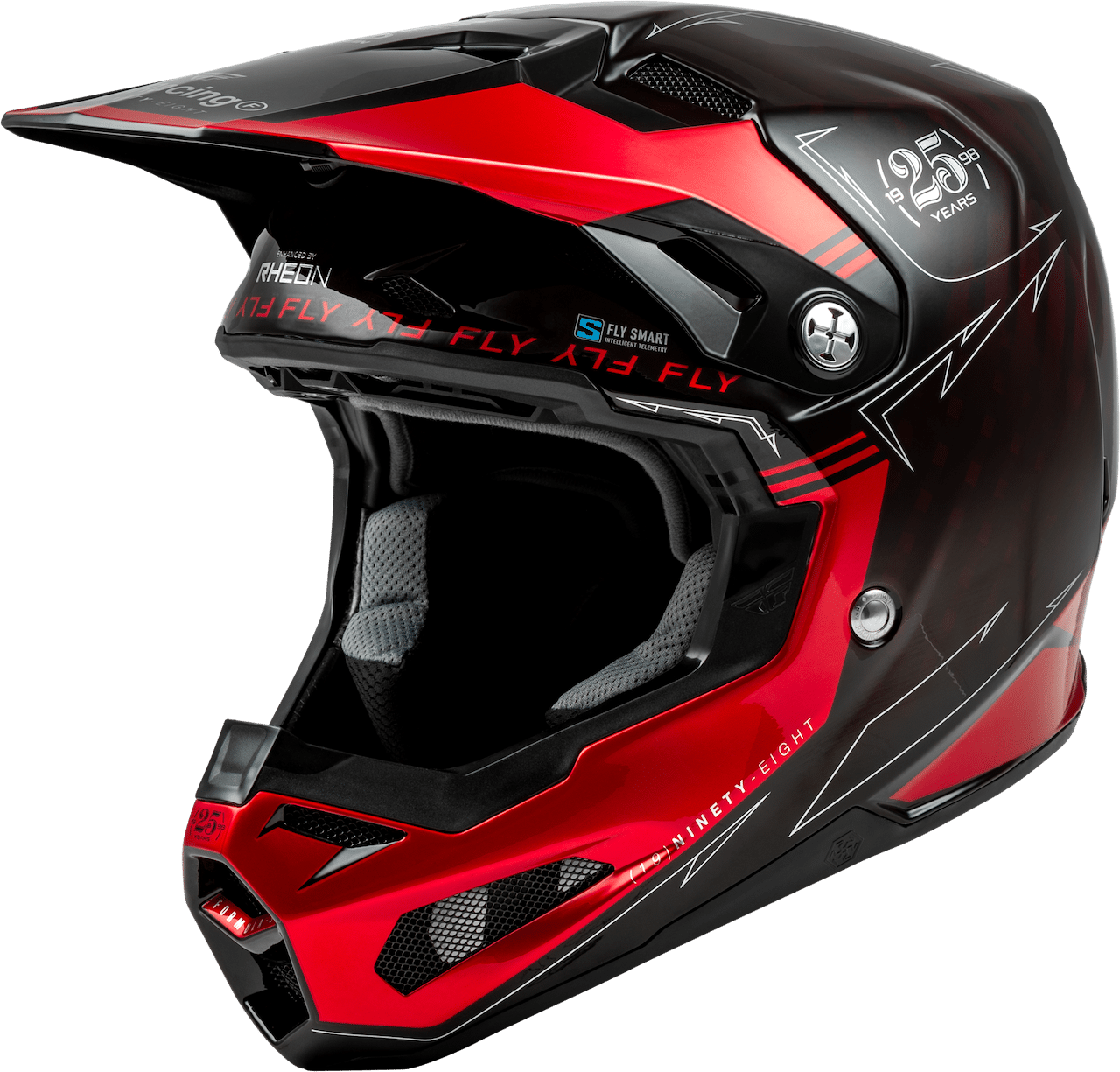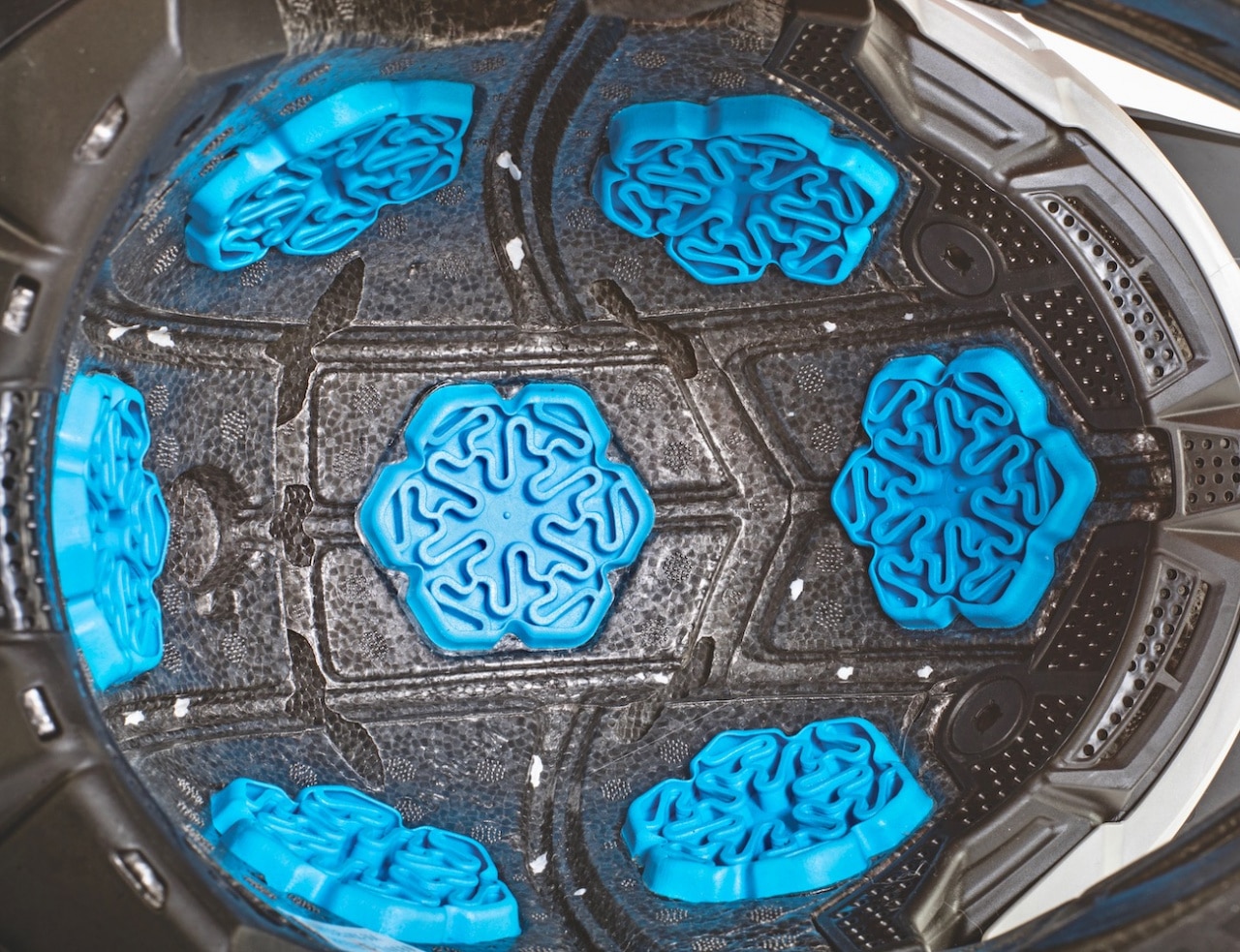TEN THINGS ABOUT FLY RACING’S FORMULA S “SMART” HELMET
(1) Concept. The Fly Racing Formula S helmet is the first of its kind in the motocross market. Structurally, it’s the same as the standard Fly Racing Formula helmet, only it costs $100 more and has a crash-detection microchip built into the shell with five scientific grade sensors to collect real-world impact data and immediately alert your emergency contact in the event of a crash.
(2) Question. “Is my helmet still safe to wear?” is a common question at the track, and it should be asked more often if we’re being honest. Most of the time riders don’t want to talk about their head injury out of fear that they might be told not to ride anymore for the day, the week or even longer. Many of us would rather ignore concussion symptoms and keep having fun. Now, with the Quin device installed in the Formula S helmet, Fly Racing is able to show data for each impact the helmet takes.
(3) Partnership. Fly Racing partnered with Quin on this project. Since 2018, Quin has specialized in crash detection for on-road motorcyclists and has been helping riders in emergencies. Quin has its own proprietary helmet for the street bike market, but they knew that their best option for motocross was to partner with an established brand. At the same time, Fly Racing needed Quin for their technology.
(4) Battery-powered. The Quin microchip is built into the back of the helmet, and it automatically turns on once you pick up the helmet and goes to sleep after sitting motionless for five minutes. It has a rechargeable lithium-ion battery with a two-hour fast-charge mode via micro USB and up to 45 days of battery life, estimating that you ride daily for two hours.
(5) Free app. To utilize the benefits of the helmet, the Fly Smart app is free to download, and it will give you access to many features free of charge. However, it doesn’t give you the same details as the paid version. version. The premium Apex version of the app displays a graph showing the spike severity, the G-forces sustained by the helmet, crash location, speed when impact occurred, the location on the helmet that the blow was sustained, and the ambulatory services if needed.
(6) Premium app. The premium Apex version of the Fly Smart app costs $7.99 per month, or $76.90 for the year (saving you $2 monthly). It also pays for the SOS feature, which automatically provides the first-response team in route to you with your name, blood type and medical history so they can be more prepared in a worst-case scenario. In the future, the premium version of the app will get more updates for ride analytics, and eventually they’ll be able to integrate lap times into the app.

(7) Protection. Yes, the Formula S has Bluetooth technology, but that doesn’t help mitigate energy in the case of a crash. To protect your noggin, the Fly Racing Formula helmet uses Rheon energy cells, a dual-density EPS liner and a 12k carbon fiber shell. The Rheon energy cells work like suspension for your helmet, and they help absorb low-speed linear and rotation impacts. The cone-head EPS foam liner uses a soft inner liner and six separate pieces of EPS, which have been fine-tuned for progressive response to low- and high-speed impacts via the cones.
(8) Liability. The Fly Smart app provides impact data that will help you assess the hit that either you took, or your child took, in the crash. It measures the G-forces that go through the helmet, but not your brain. Legally, Fly isn’t prepared to tell you if your helmet has been compromised in the crash or not. They only provide data to help you make that decision yourself. Scientific studies vary on the amount of G-forces your brain can take before it’s considered to be at concussion level.
(9) Availability. Currently, the “smart” technology is available on the Formula S helmet, which is available in five different color options. You can also sync multiple helmets to your Fly Smart app for riders who want to match their helmet with their gear of choice for the day.
(10) MXA perspective. This technology is overdue. Although Fly Racing can’t say it, we can. Most riders use their helmets long past their “best by” date. Helmets are expensive and sentimental. Nobody wants to spend $500 to $800 on a good helmet and then retire it after their first hard hit—even though they probably should. We hope this technology shines a light on the severity of head injuries in our sport and prevents riders from going back out on the track too soon after suffering a concussion.









Comments are closed.